1. Drossman DA, Richter JE, Talley NS. The Functional Gastrointestinal Disorders. 1994. 1st ed. Boston: Brown and Company;p. 217–263.
2. Read NW, Timms JM, Barfield LJ, Donnelly TC, Bannister JJ. Impairment of defecation in young women with severe constipation. Gastroenterology. 1986; 90(1):53–60. PMID:
3940255.

3. Elliot DL, Watts WJ, Girard DE. Constipation. Mechanisms and management of a common clinical problem. Postgrad Med. 1983; 74(2):143–149. PMID:
6878084.
4. Enck RE. Constipation: etiologies and management. Am J Hosp Care. 1988; 5(5):17–19.
5. Rolig E. Diet and constipation. J Fam Pract. 1985; 21(5):337–338. PMID:
4056667.
6. Burkitt DP. Epidemiology of cancer of the colon and rectum. Dis Colon Rectum. 1993; 36(11):1071–1082. PMID:
8223063.

7. Di Gregorio C, Losi L, Fante R, Modica S, Ghidoni M, Pedroni M, Tamassia MG, Gafà L, Ponz de Leon M, Roncucci L. Histology of aberrant crypt foci in the human colon. Histopathology. 1997; 30(4):328–334. PMID:
9147080.

8. Kirjavainen PV, Ouwehand AC, Isolauri E, Salminen SJ. The ability of probiotic bacteria to bind to human intestinal mucus. FEMS Microbiol Lett. 1998; 167(2):185–189. PMID:
9809419.

9. Ewe K, Ueberschaer B, Press AG. Influence of senna, fibre, and fibre+senna on colonic transit in loperamide-induced constipation. Pharmacology. 1993; 47(Suppl 1):242–248. PMID:
8234436.
10. Wintola OA, Sunmonu TO, Afolayan AJ. The effect of
Aloe ferox Mill. in the treatment of loperamide-induced constipation in Wistar rats. BMC Gastroenterol. 2010; 10:95. PMID:
20723249.

11. Williams DC, Sgarbieri VC, Whitaker JR. Proteolytic activity in the genus ficus. Plant Physiol. 1968; 43(7):1083–1088. PMID:
16656886.

12. Vinson JA. The functional food properties of figs. Cereal Food World. 1999; 44(2):82–87.
13. Kim KH. Chemical components of Korean figs and its storage stability. Korean J Food Sci Technol. 1981; 13(2):165–169.
14. Kim SS, Lee CH, Oh SL, Chung DH. Chemical components in the two cultivars of Korean figs (Ficus carica L.). Agric Chem Biotechnol. 1992; 35(1):51–54.
15. Moon CK, Kim YG, Kim MY. Studies on the bioactivities of the extractives from Ficus carica. J Inst Agric Res Util. 1997; 31:69–79.
16. Ryu SR, Cho H, Jung JS, Jung ST. The study on the separation, antitumor activity as new substances in fig. J Applied Chem. 1998; 2(2):961–964.
17. Arhan P, Devroede G, Jehannin B, Lanza M, Faverdin C, Dornic C, Persoz B, Tétreault L, Perey B, Pellerin D. Segmental colonic transit time. Dis Colon Rectum. 1981; 24(8):625–629. PMID:
7318630.

18. Drossman DA, Thompson WG, Talley NJ, Funch-Jensen P, Jassens J, Whiteheal WE. Identification of functional gastrointestinal disorders. Gastroenterol Int. 1990; 3:159–172.
19. Haubrich WS, Schaffner F, Berk JE. Bockus Gastroenterology. 1995. 5th ed. Philadephia: W.B. Saunders;p. 102–112.
20. Solomon A, Golubowicz S, Yablowicz Z, Grossman S, Bergman M, Gottlieb HE, Altman A, Kerem Z, Flaishman MA. Antioxidant activities and anthocyanin content of fresh fruits of common fig (
Ficus carica L.). J Agric Food Chem. 2006; 54(20):7717–7723. PMID:
17002444.
21. Veberic R, Colaric M, Stampar F. Phenolic acids and flavonoids of fig fruit Ficus carica in the northern Mediterranean region. Food Chem. 2008; 106(1):153–157.
22. Guarrera PM. Traditional phytotherapy in Central Italy (Marche, Abruzzo, and Latium). Fitoterapia. 2005; 76(1):1–25. PMID:
15664457.

23. Jeong WS, Lachance PA. Phytosterols and fatty acids in fig (Ficus carica, var. Mission) fruit and tree components. J Food Sci. 2001; 66(2):278–281.
24. Brown L, Rosner B, Willett WW, Sacks FM. Cholesterol-lowering effects of dietary fiber: a meta-analysis. Am J Clin Nutr. 1999; 69(1):30–42. PMID:
9925120.

25. Montonen J, Knekt P, Järvinen R, Aromaa A, Reunanen A. Whole-grain and fiber intake and the incidence of type 2 diabetes. Am J Clin Nutr. 2003; 77(3):622–629. PMID:
12600852.

26. Lairon D, Arnault N, Bertrais S, Planells R, Clero E, Hercberg S, Boutron-Ruault MC. Dietary fiber intake and risk factors for cardiovascular disease in French adults. Am J Clin Nutr. 2005; 82(6):1185–1194. PMID:
16332650.

27. Liu S, Stampfer MJ, Hu FB, Giovannucci E, Rimm E, Manson JE, Hennekens CH, Willett WC. Whole-grain consumption and risk of coronary heart disease: results from the Nurses' Health Study. Am J Clin Nutr. 1999; 70(3):412–419. PMID:
10479204.

28. Petruzziello L, Iacopini F, Bulajic M, Shah S, Costamagna G. Review article: uncomplicated diverticular disease of the colon. Aliment Pharmacol Ther. 2006; 23(10):1379–1391. PMID:
16669953.

29. Watzl B, Girrbach S, Roller M. Inulin, oligofructose and immunomodulation. Br J Nutr. 2005; 93(Suppl 1):S49–S55. PMID:
15877895.

30. Whelton SP, Hyre AD, Pedersen B, Yi Y, Whelton PK, He J. Effect of dietary fiber intake on blood pressure: a meta-analysis of randomized, controlled clinical trials. J Hypertens. 2005; 23(3):475–481. PMID:
15716684.

31. Lee HJ, Hwang EH. Effects of alginic acid, cellulose and pectin level on bowel function in rats. Korean J Nutr. 1997; 30(5):465–477.
32. Lupton JR, Morin JL, Robinson MC. Barley bran flour accelerates gastrointestinal transit time. J Am Diet Assoc. 1993; 93(8):881–885. PMID:
8393033.

33. Gordon DT. The importance of total dietary cellulose in human nutrition and health. Korean J Nutr. 1992; 25(1):75–76.
34. Nyman M, Schweizer TF, Tyrén S, Reimann S, Asp NG. Fermentation of vegetable fiber in the intestinal tract of rats and effects on fecal bulking and bile acid excretion. J Nutr. 1990; 120(5):459–466. PMID:
2160526.

35. Wald A. Colonic transit and anorectal manometry in chronic idiopathic constipation. Arch Intern Med. 1986; 146(9):1713–1716. PMID:
3753111.

36. Metcalf AM, Phillips SF, Zinsmeister AR, MacCarty RL, Beart RW, Wolff BG. Simplified assessment of segmental colonic transit. Gastroenterology. 1987; 92(1):40–47. PMID:
3023168.

37. Lee SI. Treatment of constipation. Korean J Gastroenterol. 2002; 40:37S–47S.
38. Gordon DT. Functional properties vs physiological action of total dietary fiber. Cereal Foods World. 1989; 34(7):517–525.
39. Spiller GA, Chernoff MC, Hill RA, Gates JE, Nassar JJ, Shipley EA. Effect of purified cellulose, pectin, and a low-residue diet on fecal volatile fatty acids, transit time, and fecal weight in humans. Am J Clin Nutr. 1980; 33(4):754–759. PMID:
7361693.

40. Jenkins DJ, Reynolds D, Leeds AR, Waller AL, Cummings JH. Hypocholesterolemic action of dietary fiber unrelated to fecal bulking effect. Am J Clin Nutr. 1979; 32(12):2430–2435. PMID:
506965.

41. Park EY, Lee SS. Effect of dietary fiber on the serum lipid level and bowel function in aged rat. Korean J Nutr. 1996; 29(9):934–942.
42. Vahouny GV, Kritchevsky D. Dietary Fiber in Health and Disease. 1982. New York: Plenum Press;p. 263–415.
43. Amos S, Binda L, Chindo B, Akah P, Abdurahman M, Danmallam HU, Wambebe C, Gamaniel K. Evaluation of methanolic extract of
Ficus platyphylla on gastrointestinal activity. Indian J Exp Biol. 2001; 39(1):63–67. PMID:
11349528.
44. Baldassano S, Tesoriere L, Rotondo A, Serio R, Livrea MA, Mule F. Inhibition of the mechanical activity of mouse ileum by cactus pear (
Opuntia ficus indica, L, Mill.) fruit extract and its pigment indicaxanthin. J Agric Food Chem. 2010; 58(13):7565–7571. PMID:
20518499.
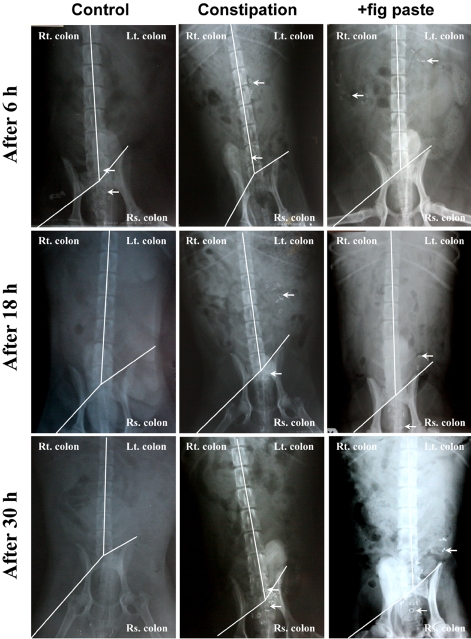




 PDF
PDF ePub
ePub Citation
Citation Print
Print


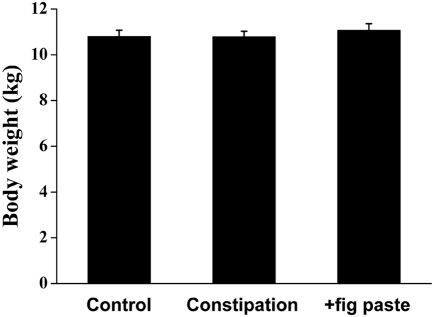

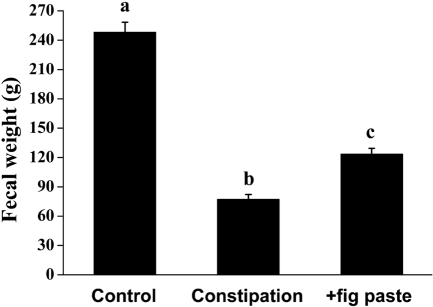

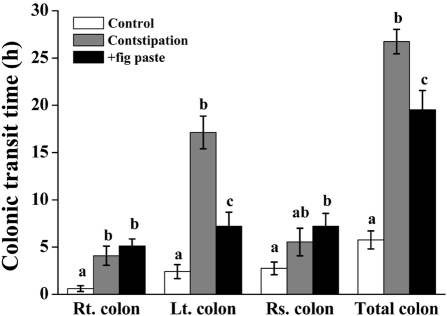
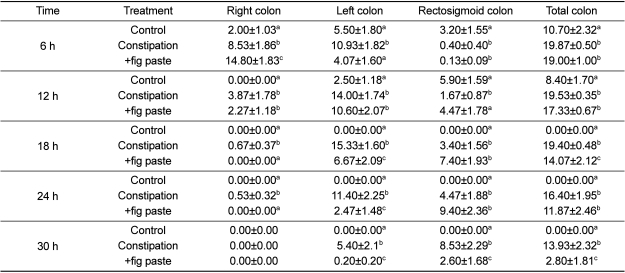
 XML Download
XML Download